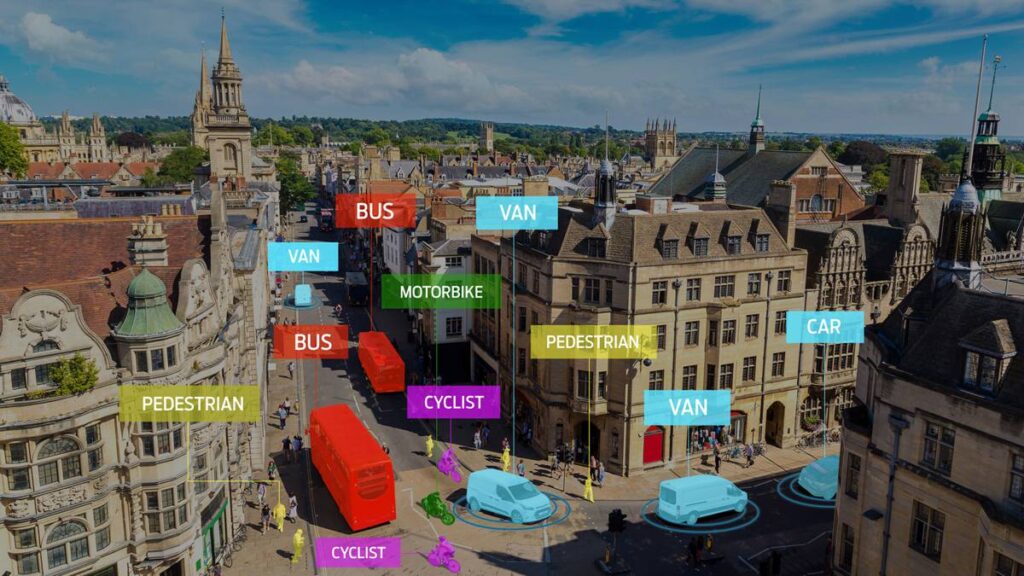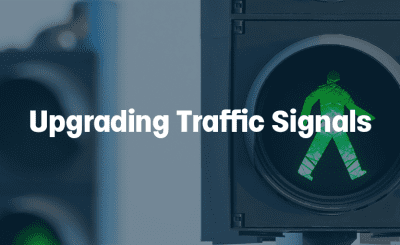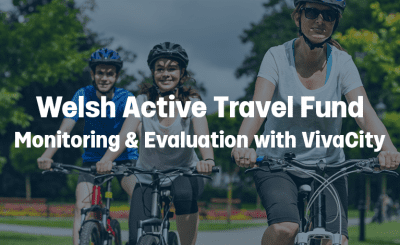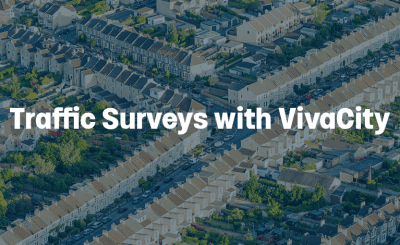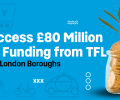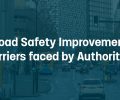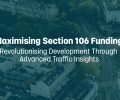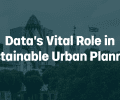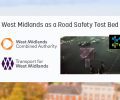It’s been great to see the latest incoming coverage surrounding our sensors and how we monitor travel. However, it’s understandable that, without prior knowledge of how this new technology works, some people see us veering headfirst into an all-seeing, omniscient network of “Big Brother” cameras monitoring our every move. This isn’t what we stand for.
In order to break it down, here we outline three things we do, and three things we don’t. Not just don’t do, but will never do when using our technology.
Three things we do
1. Unprecedented insight through video analytics
Forget a human watching a video feed 24/7 – our sensors have been trained to classify different types of transport modes, from cars, vans, and HGVs, to pedestrians and cyclists. Nothing is recorded; the sensors, using AI, can, in real-time, detect what type of road user is passing when and feed this back as anonymous numerical data. For example, five counts of cyclists, two pedestrians and one bus. It’s a data feed – not a video feed.
2. Optimised travel data to improve our everyday lives
If you’ve been stuck in a painstakingly long traffic jam, or cycled down a street where a driver decides not to give you a space to ride safely, this is where our technology is helping. The numerical data from our sensors, which outlines different types of travel, trends, and pathways, can be used to help councils and transport authorities improve infrastructure. For example, we can provide anonymous data on where pedestrians tend to step out into the road without looking, where cyclists are straying from designated lanes, or where cars overtake cyclists too closely, helping the authorities to change the road layout to improve safety. Or we can collect data to help us understand how long queues are at a particular junction, so councils can redesign roads knowing how many lanes are needed.
These examples demonstrate just some of the many ways our data can be used to make life easier for road users, flagging interventions where congestion arises, and, crucially, facilitating active travel (cycling and pedestrians), which has seen an increase since lockdown and aligns with the green recovery moving forward. Forget the stressed, traffic jam nightmares; soon, we could be gliding effortlessly through our streets and getting to our destination in no time, and on the most suitable/safe mode of transport.
3. The future of citizen-centric Smart Cities is now
The future of our transport networks is happening now. Current traffic lights struggle to adapt to the ever-changing patterns of traffic on our roads. Our smart sensors and traffic light systems can react to the live situation on the road, prioritising certain road users as and when necessary, and help significantly improve traffic flow, ease congestion, and reduce emissions.
At the heart of this vision is the citizen. We believe strongly that the future of the Smart City has to be citizen-centric, and that keeping citizen’s data safe and private is critical to the success of this technology. Our sensors will never collect personal data and our clients cannot use the technology to do so. Our technology is designed to make our lives easier, not infringe on them.
Three things we don’t do (and never will)
1. We don’t record, stream or keep any video footage
Big Brother is not watching you; the sensors do not record or stream video footage. Each video frame from the camera inside the sensor is processed within milliseconds on the device and then immediately discarded. During initial setup of the sensor, we store a few minutes of video to allow us to configure and calibrate the system. Once set up, this video is also deleted. The devices are referred to as sensors, rather than cameras, because they are not recording any footage. They are not streaming any footage anywhere and nobody is actually watching it, so you don’t need to worry about playing to a live audience.
The images you may see out and about from our sensors have been specifically created for marketing purposes and will never disclose any personal data. Got to show off our product somehow!
2. We don’t monitor your every move
The scariest prediction of George Orwell’s ‘1984’ is the idea of being constantly watched and analysed on every move, thought and social decision you make. No one wants that – and it goes completely against our company ethos.
In March, we looked at how we could help the national effort in fighting the virus and established that our sensors could analyse social distancing data. However, this data is purely based on how behaviour is changing in terms of how close or apart people are staying together, a deeper understanding of how space is being used, and how that can be improved or how it can be made safer. Critically, all of the data is anonymous and aggregated before it is shared. We don’t know, and can’t identify, the specific people who walked down the street 2m apart, simply the stats that two pedestrians took these paths. No social distancing data on individual cities is provided to central government, and individual cities only get aggregated data across hundreds or thousands of individuals. So, you can carry on doing you down the street, knowing you’re not in the Truman Show.
3. We don’t use data to enforce regulations
Another nightmare is having orders barked at you from speakers on the street. Our role as a company is to simply provide data on travel, be that cars, cyclists or pedestrians, and help to improve control traffic junctions. We have no capability, nor desire, to enforce any social distancing regulations – we don’t know who’s who. Furthermore, as previously mentioned, our clients do not, and will never, have the means with which to use the technology to collect personal data.
As we head into the next stages of the pandemic and continue to establish a ‘new normal’, technology provides the means for us to innovate and drive forward changes that can make our lives easier, healthier, and safer. That in a nutshell, is what we are here to do.

